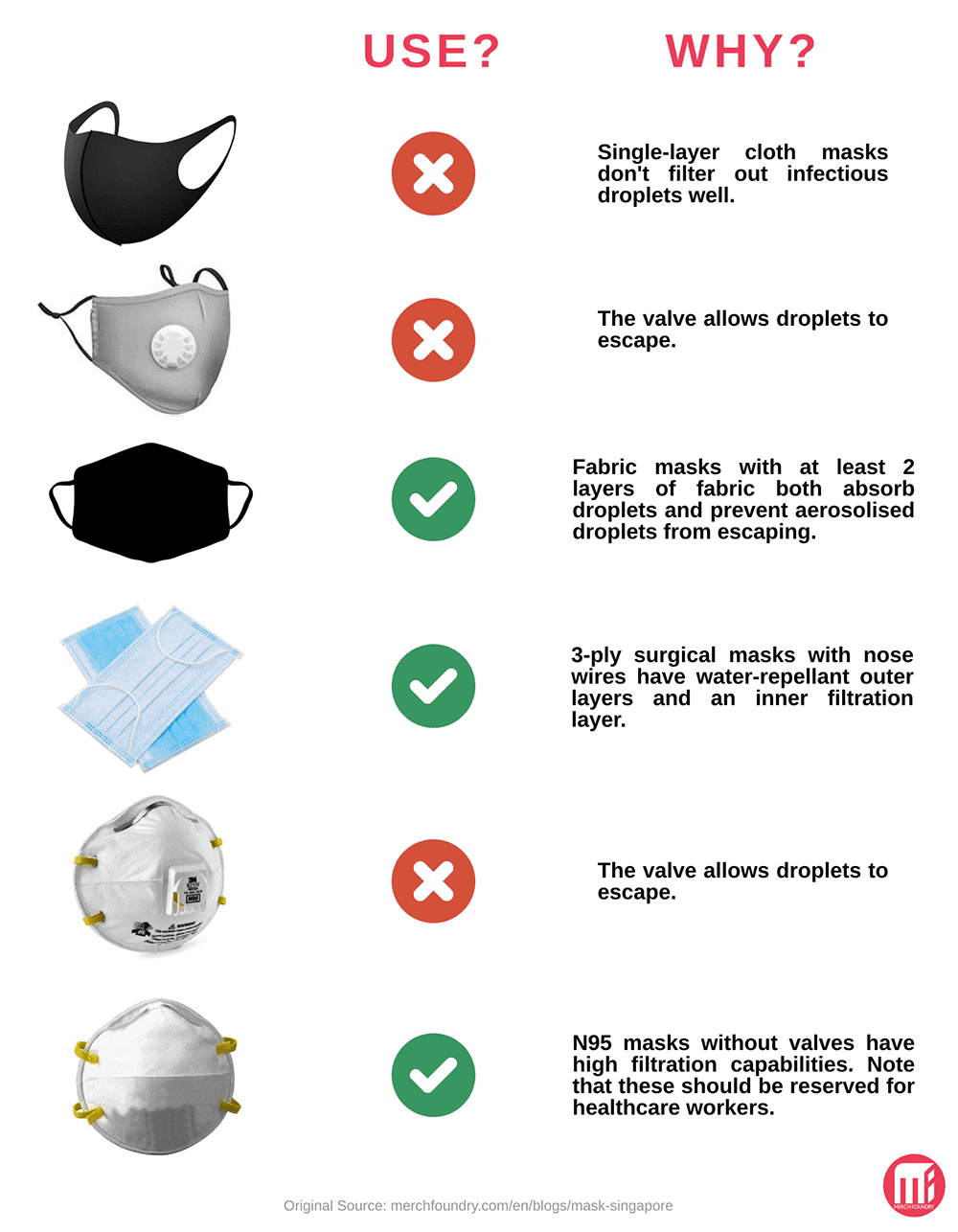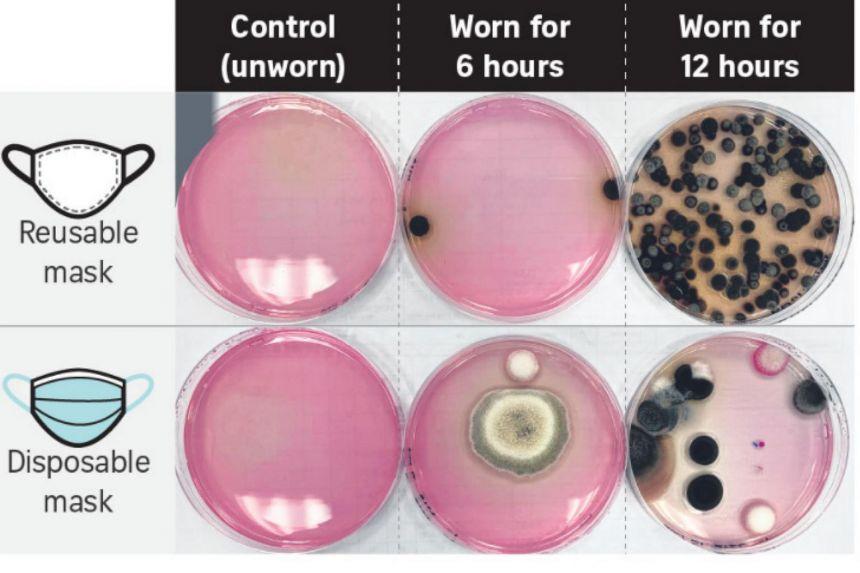Guarding Against COVID19 Variants: What's the Best Mask?
As of May 18, the Ministry of Health has updated its guidelines to urge the public to wear masks with “better filtration efficiency.”
This all started because the new variants seem to transmit despite masks and vaccinations.
While the local situation is not so dire as to necessitate holing up in a bunker, it does warrant more caution than usual.
That’s why we’ll talk about the type of masks to use — and the ones you shouldn’t — in this article.
What types of masks should I use/not use?
Choose a mask with at least two to three layers of fabric. The outer layer should be made of polyester or a similarly water-resistant material, while the inner layer should be a finely woven fabric to absorb droplets or aerosols from your mouth.
You can also opt for a multilayered cloth mask with an inner pocket for filter inserts, like this one.
If you’re using disposable masks, make sure they’re at least 3-ply and have a nose wire to prevent air from leaking out the top.
But more importantly, check the packaging to make sure the masks have at least 95% bacterial filtration efficiency (BFE) as rated by ASTM. Not all masks are rated by ASTM, so it’s worth the extra effort to look for a mask that can effectively filter infectious particles.
Also read: How do I spot fake PPE?

What’s the difference between BFE and PFE?
BFE stands for Bacterial Filtration Efficiency, while PFE stands for Particle Filtration Efficiency. The former filters outgoing aerosols and droplets, while the latter filters incoming airborne particles like dust.
With the exception of those with high Particle Filtration Efficiency (PFE), most masks rated for BFE protect others around you. They’re meant to reduce the aerosols and water droplets you release into the air.
In other words, a typical mask doesn’t protect you from infection. It just prevents you from infecting someone else.
What’s the best way to wash reusable masks?
In general, masks should be washed once a day after every use. Scrub both sides using warm water and detergent for at least 20 seconds. You can hang dry or tumble dry on high heat afterwards.
The reusable masks given out by Temasek Foundation are one exception. Since they’ve got an antimicrobial and antiviral coating, they only need to be washed once a week or when dirty.
What happens if I don’t wash my reusable mask?
One study measured the levels of bacteria, yeast, and mould after 6 and 12 hours of use. Check out their results:

Yikes — probably not something you want to be breathing in.
And if that visual isn’t enough for you, get this: the longer your mask goes unwashed, the more likely it is to trigger skin sensitivity, irritation, and infection.
And we don’t mean just acne breakouts on your face — at worst, you may also develop respiratory problems and nasal infections.
Can I leave my mask out in the sun to kill bacteria?
There’s a theory going around that UV light from the sun can kill the virus.
This is only partially true.
Why? Because UV light is actually made of three types: UV-A light, UV-B light, and UV-C light. UV-A and UV-B light are what we’re exposed to when we go out in the sun. But UV-C — which is what contains germicidal properties — is mostly blocked by the ozone layer.
That means even if you leave your mask out in the sun or on the windshield of your car, you’re not actually killing much bacteria.
There are UV-C light devices you can buy, of course. But we wouldn’t go out and buy a cheap UV lightbulb off Shopee just yet — the ones made for home use are typically low-intensity. Unless you’re exposing your mask to the
UV-C light for prolonged periods of time, you’re unlikely to fully disinfect the material.
Not to mention that UV-C light poses significant risks, like eye injuries, burn-like skin reactions, irritation from ozone inhalation, and degradation of certain materials.
I’ve heard there are fake PPE out on the market. How do I spot them?
CNA Insider has a quick 2-minute video on how to check for fake surgical masks.
Otherwise, these clues are also indications that the PPE could be fake:
- Products that don’t seem to have passed quality control checks, like those with detached straps or faded packaging.
- Products that lack packaging or have substandard packaging.
- Products sold as loose or single pieces.
- Products with packaging in a different language. Manufacturers tend to ship and label products specifically tailored to the regulatory requirements of the country where they sell the products.
The best way to avoid fake PPE is to buy them directly from the manufacturer or authorised distributors.